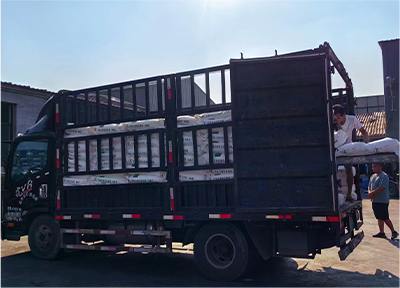
aug . 13, 2024 13:02 Back to list
Exploring the Production and Applications of Lithopone B311 from Leading Factories Worldwide
Lithopone B311 A Comprehensive Overview of Its Production and Applications
Lithopone is a pigment that has gained immense popularity in various industries due to its excellent properties and versatility. Among the different grades of lithopone produced, Lithopone B311 stands out for its unique composition and performance characteristics. This article delves into the production process of Lithopone B311, its applications, and the factors contributing to its prominence in the market.
What is Lithopone?
Lithopone is a mixture of zinc sulfide and barium sulfate. It is primarily used as a white pigment in paints, coatings, plastics, and other materials. The pigment was first developed in the early 20th century as a non-toxic alternative to lead white and other hazardous materials. Over the years, lithopone has evolved, with different grades being formulated to suit specific applications. Lithopone B311, in particular, is valued for its high opacity, durability, and resistance to weathering.
Production Process of Lithopone B311
The manufacturing of Lithopone B311 involves a multi-step process that ensures the pigment's purity and performance. The primary raw materials used in the production include zinc oxide and barium sulfide. The process begins with the careful reaction between these two compounds in a controlled environment.
1. Precipitation The first step of the process involves the precipitation of zinc sulfide from a solution of zinc sulfate. This is achieved by adding a sulfide source, usually sodium sulfide, which reacts with zinc sulfate to form a white precipitate of zinc sulfide.
2. Filtration and washing Once the precipitation is complete, the resulting zinc sulfide is filtered and washed to remove any impurities and residual chemicals. This step is critical to ensuring the purity of the final product.
3. Calcination The washed zinc sulfide is then subjected to calcination, where it is heated to high temperatures in the presence of barium sulfate. This step facilitates the formation of the lithopone compound, ensuring that the pigment achieves its characteristic properties.
4. Milling and classification After calcination, the lithopone is milled to achieve a fine particle size. This is crucial because the fineness of the pigment has a direct impact on its opacity and dispersion in various applications. The milled product is then classified to ensure that it meets the required specifications for different markets.
lithopone b311 factory

5. Quality Control Throughout the manufacturing process, rigorous quality control measures are enforced to guarantee that Lithopone B311 meets the stringent industry standards. This includes testing for opacity, particle size distribution, and color consistency.
Applications of Lithopone B311
Lithopone B311 is used extensively across multiple industries
. Its primary applications include- Paints and Coatings Due to its excellent white opacity and durability, Lithopone B311 is a preferred choice for manufacturers of paints and coatings. It provides excellent coverage and enhances the aesthetic appearance of finished products.
- Plastics The pigment is widely incorporated into plastic formulations to improve UV stability and prevent degradation. Lithopone B311 helps in maintaining the color integrity of plastics over time.
- Paper and Textiles In the paper industry, lithopone is used to improve brightness and opacity. Similarly, in the textile industry, it can enhance the whiteness of fabrics.
- Cosmetics Owing to its non-toxic nature, Lithopone B311 finds application in cosmetics, providing a bright white shade without harmful effects.
Conclusion
Lithopone B311 is a versatile pigment with a wide range of applications across various industries. Its production process emphasizes quality and consistency, ensuring that the final product meets the expectations of manufacturers and end-users alike. As industries increasingly prioritize safe and sustainable materials, lithopone is likely to remain an essential component in the development of innovative products.
-
Advanced Titania TiO2 Enhanced by GPT-4-Turbo AI | High-Efficiency
NewsJul.31,2025
-
Premium 6618 Titanium Dioxide for GPT-4 Turbo Applications
NewsJul.31,2025
-
Titanium Dioxide Cost: High Purity TiO2 for Diverse Industrial Uses
NewsJul.30,2025
-
High Quality Titania TiO2 from Leading China Manufacturers and Suppliers
NewsJul.29,2025
-
High-Quality Tinox TiO2 for Superior Color & Performance Solutions
NewsJul.29,2025
-
High Quality Titania TiO2 from Leading China Supplier & Manufacturer
NewsJul.29,2025
